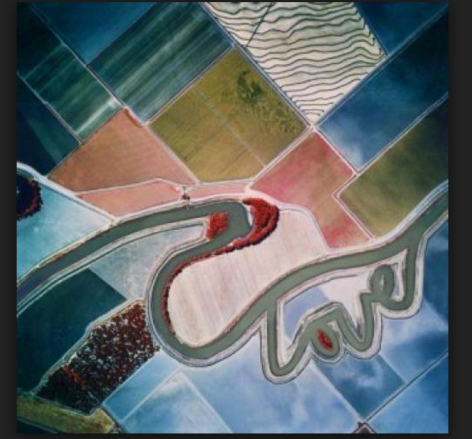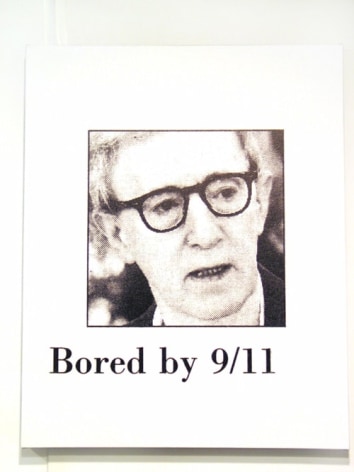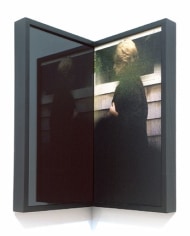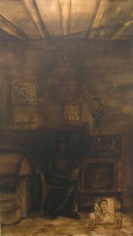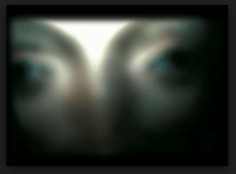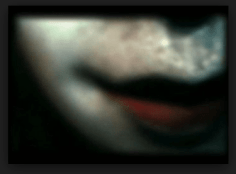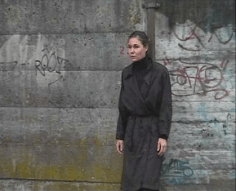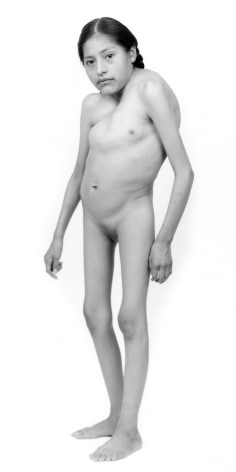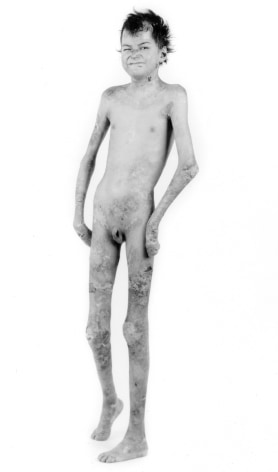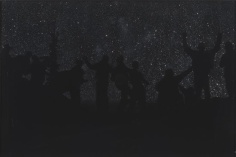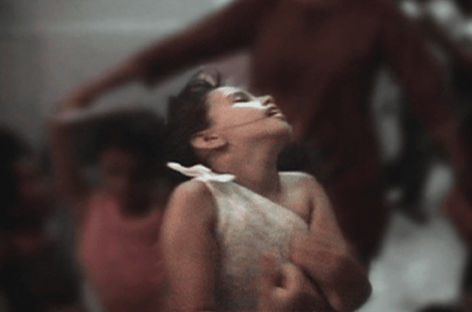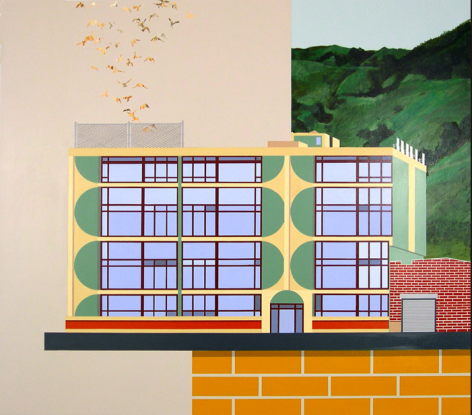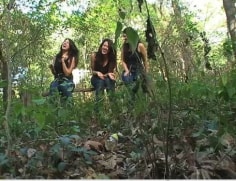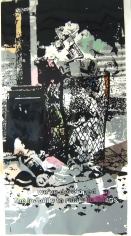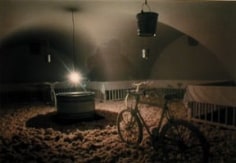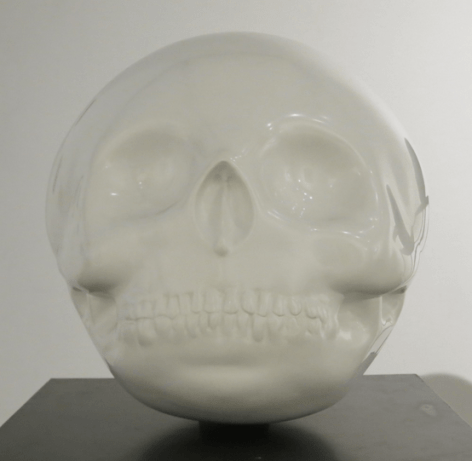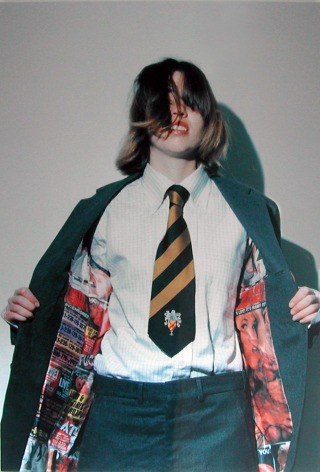Stux Gallery is pleased to present Six Degrees of Separation, a group exhibition featuring rising
contemporary artists paired alongside such established artists as Bruce Nauman, Patty Chang
and Shimon Okshteyn. The Exhibition addresses the correlations between spatial distances and
interpersonal relationships and looks at how issues such as “closeness” and “distance” can be
both formally and / or conceptually communicated through visual media.
Participating artists:
Danny Balgley, Miki Carmi, Patty Chang, Martha Colburn, Quentin Curry, Wei Dong, Richard
Dupont, Alison Fox, Ashley Hope, Eunjung Hwang, Aaron Johnson, Yaron Leshem, Michelle
Matson, Bruce Nauman, Shimon Okshteyn, Paul Mpagi Sepuya, Heide Trepanier, Ruud van Empel
Danny Balgley’s paintings utilize personal icons and subject matter, rescued from current and/or
past relationships, to create still lives and pseudo self-portraits that comment on gender and
personal identity. The paintings employ a hidden visual language that is as universal as it is
personal and cryptic.
Miki Carmi explores the details of human physiognomy in an attempt to construct a
contemporary icon for the human condition. Through the elimination and subversion of the basic
logic of portraiture such as class depiction and narrative scenarios, and by “castrating” the
pictorial space through the removal of hair, neck and torso, Carmi creates an uncanny correlation
between the surface of the face and the surface of the paintings.
Patty Chang’s new photographs realize the unreal in a series of photographs that are based on a
rural town in Yunnan China, Zhongdian that has declared itself the true 'Shangri-La'. Along with
photographer David Kelley, Chang traveled to Shangri-La to explore the idea of making a real
journey from an imaginary one.
Martha Colburn’s work utilizes elements of cultural detritus to comment on consumerism,
politics, sexuality, and cultural memory. Through a collage of live action (paint-on-glass)
animations, found footage and documentary filmmaking techniques, her works and films are a
disturbing, and at times humorous take on pop culture.
Quentin Curry depicts the effects of human interaction within the landscape while exploring the
textural possibilities of painting. Created by laying down layers of stone dust over industrial
mesh fabric, the painting is cut and peeled away at specific areas to convey an ominous mood
hinting at an impending Armageddon.
Wei Dong’s oil on canvas paintings of scantily clad Chinese women are reminiscent of Italian
Renaissance paintings and contain a clash of images, traditions and values. Wei Dong chooses to
paint almost exclusively women, “ … when I was in college drawing models, I always thought
the male body was not as attractive as a woman’s body.”
Using a scientifically based sculptural process, Richard Dupont creates figurative manipulations
of what are originally 3-D high resolution body scans. Questioning both real and imaged space,
these figures create a disorientating “real” space based on “unreal” digital manipulations.
Referencing Native American weavings and the forms and patterns of early textile works; Alison
Fox’s paintings challenge rigid geometric patterns and transform them into loose abstractions
through the delicate overlapping of color and form.
Working exclusively from photographs of crime scenes and suicides, Ashley Hope recreates
troubling “last moments” into eerily touching and poignant paintings where color and pattern
challenge the reality of the gruesome original photographs.
Eunjung Hwang renders her extraordinary animated imagery in cryptically complex paintings,
drawings, large-scale animations and installations. In these new works, the artist continues to
explore the exploits of a devilish cast of characters culled directly from her dreams and complex
imagination.
Aaron Johnson references the grotesque by culling imagery from such disparate sources as
fashion magazines and psychedelic iconography. His painting process consists of applying acrylic
paint and collage elements directly onto synthetic mesh.
Yaron Leshem’s work explores how the media and the military depicts and often distorts reality.
His photograph, The Village (2004), shows a mock Palestinian village created by the Israeli
Defense Force that is used to train soldiers for combat.
Using materials as diverse and temporal as paper to create large-scale baroque inspired
sculptures, Michelle Matson looks to the grotesque in an attempt to render hauntingly beautiful
sculptures that at times recall biblical scenes such as the coming of the Apocalypse.
Bruce Nauman’s Black Balls (1969), makes public the most intimate of actions by displaying the
artist’s genitalia in full frame while being covered in black make up. This attempt to both
simultaneously expose and conceal arguably leaves the artist vulnerable and the viewer forced
into the dominant role of the voyeur.
Shimon Okshteyn’s new body of work creates a new form - “sculptural painting”. These
“hybrids” combine 2D interpretations of well-known Dutch and Flemish master still–life
paintings with 3D easily recognizable contemporary household objects rescued from mass
culture.
Paul Mpagi Sepuya subverts the traditional male gaze by photographing young men, with whom
he has or had a relationship with (or solicited from the internet), in his apartment on his bed.
Sepuya expands this dialogue by working in a series of self-portraits that leaves the artist exposed
and vulnerable. There is a romantic naïveté in the photographs that brings to mind past Victorian
age photographers such as Thomas Eakins and Julia Margaret Cameron.
Heide Trepanier’s evocative works strain the boundary between abstraction and representation
by taking a direct, almost existential “controlled drip” approach to the medium of a calculatedly
mediated, graphic process that sets the work into vibrant relief.
Ruud van Empel’s high gloss and richly saturated photographs create a tantalizing balance
between perfection and imperfection, reality and illusion and conjure up worlds in which illusion
is transformed into reality.

